-
 Bitcoin
Bitcoin $105,278.9859
4.61% -
 Ethereum
Ethereum $2,414.7741
8.20% -
 Tether USDt
Tether USDt $1.0007
0.05% -
 XRP
XRP $2.1600
7.53% -
 BNB
BNB $639.5433
3.75% -
 Solana
Solana $144.3830
9.37% -
 USDC
USDC $1.0001
0.02% -
 TRON
TRON $0.2742
3.84% -
 Dogecoin
Dogecoin $0.1640
8.57% -
 Cardano
Cardano $0.5811
7.49% -
 Hyperliquid
Hyperliquid $37.2466
5.28% -
 Sui
Sui $2.8243
14.84% -
 Bitcoin Cash
Bitcoin Cash $460.8816
2.22% -
 Chainlink
Chainlink $12.9580
11.75% -
 UNUS SED LEO
UNUS SED LEO $9.1359
1.23% -
 Avalanche
Avalanche $18.2302
10.30% -
 Stellar
Stellar $0.2463
7.80% -
 Toncoin
Toncoin $2.9151
7.18% -
 Shiba Inu
Shiba Inu $0.0...01163
9.79% -
 Hedera
Hedera $0.1532
14.01% -
 Litecoin
Litecoin $85.3310
6.29% -
 Monero
Monero $308.8215
2.90% -
 Ethena USDe
Ethena USDe $1.0007
0.03% -
 Polkadot
Polkadot $3.4259
9.42% -
 Dai
Dai $1.0002
0.01% -
 Bitget Token
Bitget Token $4.1742
3.19% -
 Uniswap
Uniswap $6.8272
8.53% -
 Pepe
Pepe $0.0...09939
12.29% -
 Pi
Pi $0.5358
6.03% -
 Aave
Aave $257.3092
12.83%
Is it a risk or an opportunity for the RSI indicator to continue to trade sideways at a high level after breaking through 70?
When RSI stalls above 70 in crypto, it may signal either strong momentum or an impending pullback—always confirm with price action and volume before making a move.
Jun 24, 2025 at 11:15 am
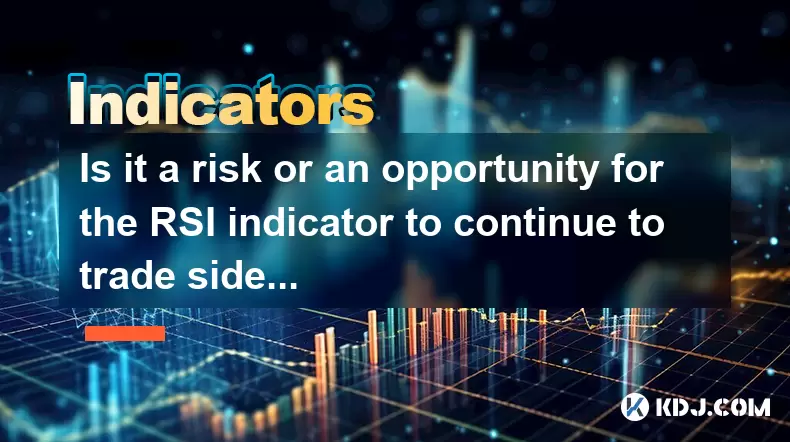
Understanding the RSI Indicator in Cryptocurrency Trading
The Relative Strength Index (RSI) is a momentum oscillator widely used by cryptocurrency traders to evaluate overbought or oversold conditions. Typically, RSI values range from 0 to 100, with readings above 70 indicating overbought territory and those below 30 signaling oversold conditions. However, in volatile crypto markets, RSI can behave unpredictably, especially when it breaks through 70 and continues trading sideways at high levels for an extended period.
This phenomenon raises critical questions among traders: Is this sideways movement after breaking 70 a risk or an opportunity? To answer this, we need to analyze how RSI functions within the context of cryptocurrency price action and market psychology.
Tip: Always consider RSI in conjunction with other technical indicators like moving averages or volume to avoid false signals.
What Does It Mean When RSI Breaks 70 and Stalls?
When RSI crosses above 70 and remains elevated, it suggests that buying pressure has been strong enough to push prices upward. However, if it doesn't continue rising but instead trades sideways, it may indicate a pause or consolidation phase rather than a reversal.
In cryptocurrency markets, such behavior can occur during bull runs where buyers keep pushing prices despite overbought readings. This often reflects strong investor confidence and sustained demand for a particular asset. In contrast, in weaker uptrends, this could signal exhaustion among buyers and the potential for a pullback.
Important: A stalled RSI above 70 should not be interpreted as an automatic sell signal without further confirmation from price action or volume data.
Identifying Risks in Extended High-Level RSI Readings
One major risk associated with RSI remaining above 70 for prolonged periods is the possibility of a sudden reversal. If the price fails to make new highs while RSI stays elevated, a bearish divergence may form, suggesting weakening momentum.
Another risk lies in trader psychology—many retail investors may interpret overbought conditions as a sign to take profits, which can trigger selling cascades even in otherwise bullish environments.
- Monitor candlestick patterns for signs of rejection at resistance levels.
- Watch for volume spikes on downward candles, which might signal increased selling pressure.
- Use trendlines to identify potential breakdown points in the current price structure.
Opportunities Presented by Stable High-Level RSI Conditions
Conversely, a stable RSI above 70 can also present opportunities, particularly in trending markets. If the price continues to move higher or consolidates in a tight range, this may reflect healthy accumulation by institutional players or whales who are not deterred by traditional overbought levels.
Traders can use this scenario to enter long positions after confirming support levels or breakout patterns. In such cases, the RSI’s sideways movement indicates equilibrium between buyers and sellers, rather than a clear reversal signal.
- Look for retests of key support levels as entry points.
- Combine RSI with Bollinger Bands to gauge volatility compression before potential breakouts.
- Analyze order book depth to determine whether large buy walls are forming near current prices.
How to Differentiate Between Risk and Opportunity Using RSI Behavior
To distinguish whether a high-level RSI stall is risky or opportunistic, traders must examine several factors:
- Price structure: Is the price still making higher highs and higher lows?
- Volume profile: Is volume increasing on up days or declining?
- Market sentiment: Are there macro-level developments influencing investor behavior?
If the price continues to rise alongside stable volume and positive news flow, the RSI hovering around 70 may indicate strength rather than weakness.
However, if volume declines significantly and price begins to show indecision or failure at resistance, then the sideways RSI may serve as an early warning sign.
- Check weekly and daily charts to assess overall trend integrity.
- Compare RSI across multiple timeframes to filter out noise and spot divergences more clearly.
- Use Fibonacci retracement levels to anticipate potential pullback zones.
Frequently Asked Questions
Can RSI stay above 70 indefinitely in crypto markets?
Yes, in strong bull trends, especially in altcoins or during parabolic moves, RSI can remain above 70 for days or even weeks. This is common during periods of extreme speculation or FOMO-driven rallies.
Should I short a cryptocurrency just because RSI is above 70?
No, RSI alone should not be the basis for entering a short trade. Wait for additional confirmation such as bearish candlestick patterns, volume surges to the downside, or bearish divergences before considering shorting.
What other indicators work well with RSI when analyzing sideways movement above 70?
Traders often combine RSI with MACD, volume profiles, and moving averages to get a clearer picture. These tools help confirm whether momentum is still bullish or starting to wane.
Is RSI more reliable on higher timeframes like daily or weekly charts?
Generally, yes. Higher timeframes tend to filter out market noise, making RSI signals more reliable. For example, a stalled RSI on the daily chart carries more weight than one observed on a 1-hour chart.
Disclaimer:info@kdj.com
The information provided is not trading advice. kdj.com does not assume any responsibility for any investments made based on the information provided in this article. Cryptocurrencies are highly volatile and it is highly recommended that you invest with caution after thorough research!
If you believe that the content used on this website infringes your copyright, please contact us immediately (info@kdj.com) and we will delete it promptly.
- Bitcoin Holdings Strategy: Riding the $BTC Wave Like a Wall Street Pro
- 2025-06-24 18:25:12
- Crypto Market Check-in: A16z's Mid-Year Indicators and the Road Ahead
- 2025-06-24 18:25:12
- Crypto Funds See $1.2B Weekly Inflows: Confidence Amidst the Chaos
- 2025-06-24 18:30:13
- Roman Coin Treasure: Centuries Hidden, Finally Revealed!
- 2025-06-24 18:30:13
- Celestia Under Fire: Navigating the $100M FUD Storm
- 2025-06-24 16:45:12
- XLM Price, Bitcoin Solaris, and Returns Prediction: Navigating the Crypto Landscape
- 2025-06-24 16:25:13
Related knowledge
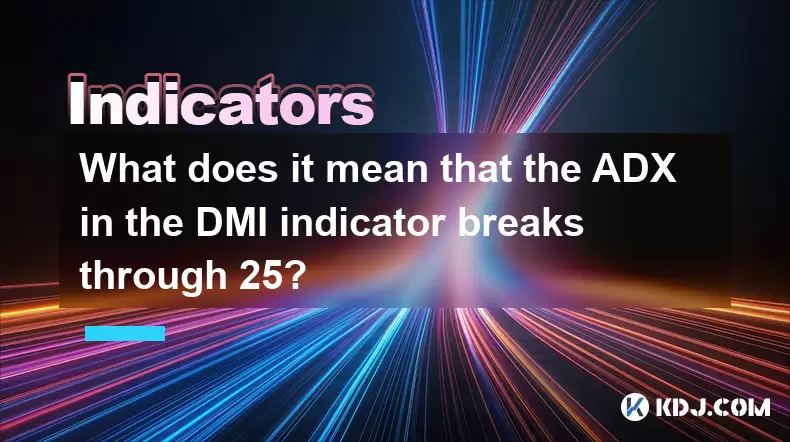
What does it mean that the ADX in the DMI indicator breaks through 25?
Jun 24,2025 at 06:21pm
Understanding the DMI Indicator and Its ComponentsThe Directional Movement Index (DMI) is a technical analysis tool used to identify the strength and direction of a trend in cryptocurrency markets. The indicator consists of two primary lines: the Positive Directional Indicator (+DI) and the Negative Directional Indicator (-DI). These lines help traders ...
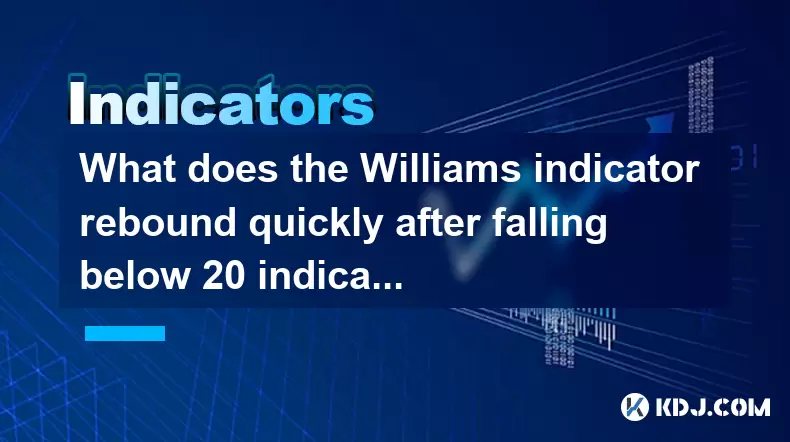
What does the Williams indicator rebound quickly after falling below 20 indicate?
Jun 24,2025 at 04:49pm
Understanding the Williams %R IndicatorThe Williams %R indicator, also known as Williams Percent Range, is a momentum oscillator used in technical analysis to identify overbought and oversold conditions in financial markets, including cryptocurrencies. It was developed by Larry Williams and typically operates on a scale from 0 to -100. In the context of...
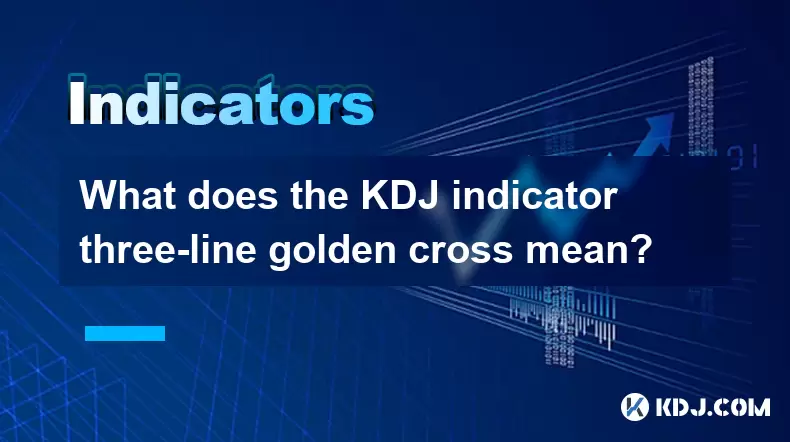
What does the KDJ indicator three-line golden cross mean?
Jun 24,2025 at 05:28pm
Understanding the KDJ Indicator in Cryptocurrency TradingThe KDJ indicator is a technical analysis tool widely used in cryptocurrency trading to identify potential buy and sell signals. It combines elements of two other indicators: the Stochastic Oscillator and the J line, which acts as a signal line. The KDJ consists of three lines — K, D, and J — each...
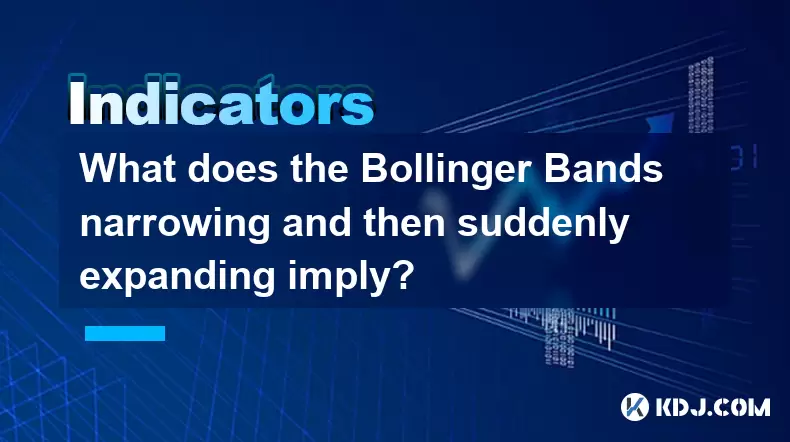
What does the Bollinger Bands narrowing and then suddenly expanding imply?
Jun 24,2025 at 05:56pm
Understanding Bollinger Bands in Cryptocurrency TradingBollinger Bands, a popular technical analysis tool, are widely used in cryptocurrency trading to assess price volatility and potential trend reversals. The indicator consists of three lines: a Simple Moving Average (SMA) in the middle, typically set at 20 periods, with two outer bands that represent...
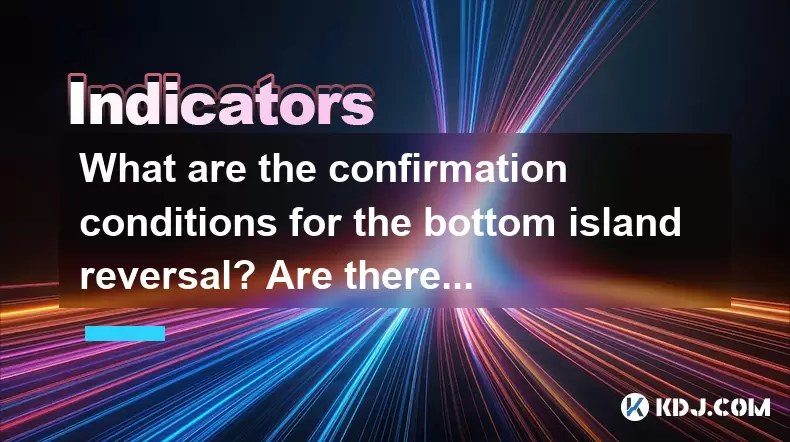
What are the confirmation conditions for the bottom island reversal? Are there many false signals?
Jun 24,2025 at 04:56pm
Understanding the Bottom Island Reversal PatternThe bottom island reversal is a rare but significant candlestick pattern that indicates a potential shift from a downtrend to an uptrend. It typically forms when there's a gap down followed by a gap up, leaving a 'blank' space on the chart — the island — which is isolated from the surrounding price action....
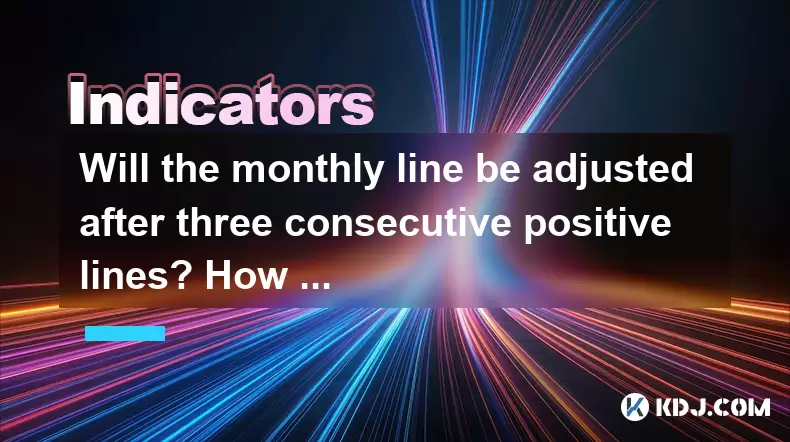
Will the monthly line be adjusted after three consecutive positive lines? How big is the callback range in general?
Jun 24,2025 at 05:21pm
Understanding Monthly Candlestick Patterns in CryptocurrencyIn the realm of cryptocurrency trading, monthly candlestick patterns play a crucial role in analyzing long-term price behavior. A monthly chart provides traders with a macro view of how an asset has performed over extended periods. When observing three consecutive positive (green) candles on th...

What does it mean that the ADX in the DMI indicator breaks through 25?
Jun 24,2025 at 06:21pm
Understanding the DMI Indicator and Its ComponentsThe Directional Movement Index (DMI) is a technical analysis tool used to identify the strength and direction of a trend in cryptocurrency markets. The indicator consists of two primary lines: the Positive Directional Indicator (+DI) and the Negative Directional Indicator (-DI). These lines help traders ...

What does the Williams indicator rebound quickly after falling below 20 indicate?
Jun 24,2025 at 04:49pm
Understanding the Williams %R IndicatorThe Williams %R indicator, also known as Williams Percent Range, is a momentum oscillator used in technical analysis to identify overbought and oversold conditions in financial markets, including cryptocurrencies. It was developed by Larry Williams and typically operates on a scale from 0 to -100. In the context of...

What does the KDJ indicator three-line golden cross mean?
Jun 24,2025 at 05:28pm
Understanding the KDJ Indicator in Cryptocurrency TradingThe KDJ indicator is a technical analysis tool widely used in cryptocurrency trading to identify potential buy and sell signals. It combines elements of two other indicators: the Stochastic Oscillator and the J line, which acts as a signal line. The KDJ consists of three lines — K, D, and J — each...

What does the Bollinger Bands narrowing and then suddenly expanding imply?
Jun 24,2025 at 05:56pm
Understanding Bollinger Bands in Cryptocurrency TradingBollinger Bands, a popular technical analysis tool, are widely used in cryptocurrency trading to assess price volatility and potential trend reversals. The indicator consists of three lines: a Simple Moving Average (SMA) in the middle, typically set at 20 periods, with two outer bands that represent...

What are the confirmation conditions for the bottom island reversal? Are there many false signals?
Jun 24,2025 at 04:56pm
Understanding the Bottom Island Reversal PatternThe bottom island reversal is a rare but significant candlestick pattern that indicates a potential shift from a downtrend to an uptrend. It typically forms when there's a gap down followed by a gap up, leaving a 'blank' space on the chart — the island — which is isolated from the surrounding price action....

Will the monthly line be adjusted after three consecutive positive lines? How big is the callback range in general?
Jun 24,2025 at 05:21pm
Understanding Monthly Candlestick Patterns in CryptocurrencyIn the realm of cryptocurrency trading, monthly candlestick patterns play a crucial role in analyzing long-term price behavior. A monthly chart provides traders with a macro view of how an asset has performed over extended periods. When observing three consecutive positive (green) candles on th...
See all articles
























































































